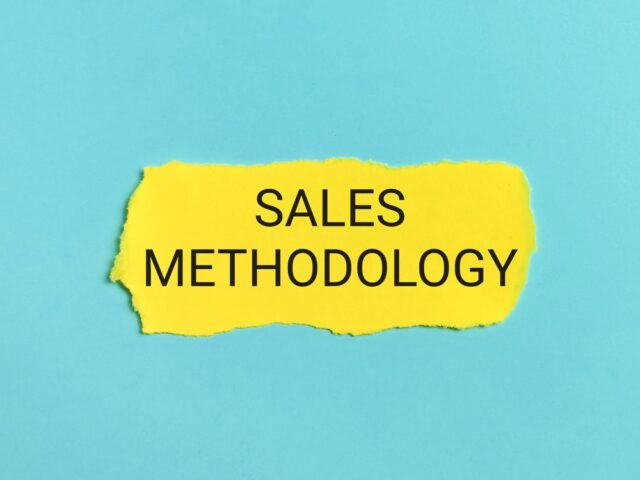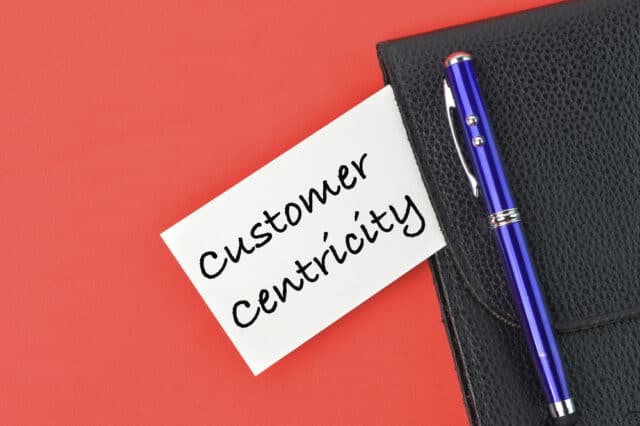Value-Based Selling – How Important is Sales methodology for firms?
Almost everything in life has a sweet spot. It is the ideal formula for getting the most out of any act, involvement, or endeavor. The secret to finding the sweet spot in sales is identifying the sales methodology that fits perfectly for your business at a particular point in the sales process.
Which one should I select when that becomes a crucial question? Understanding it can make the difference between a contract being closed and being lost.
This article will examine some common sales strategies. It will offer some professional guidance to help you choose the best one for your company.
What exactly is a sales methodology?

A structure or set of guidelines that direct your sales representatives in closing deals is known as a “sales methodology.”
It takes objectives and transforms them into doable actions that your agents can carry out at every level of the sales process.
For instance, some sales companies use several sales approaches to address the pain points of their prospects as they move through the buying process.
As a broad perspective, think of our Inbound Sales Methodology. It gives an overview of how the business works to entice prospects to make a purchase.
Sales models and sales methodology are two distinct concepts with distinct meanings. They are also frequently used interchangeably.
Sales Process

A sales model describes how to implement a sales methodology and is a company’s specialized approach to selling.
Models are frequently best practices that are pertinent to a single step of the sales cycle, such as eligibility, finding, demonstration, or follow-up.
The intricacy and unique business requirements of sales models and processes are other significant distinctions.
Based on the needs, industries, goods, and market position of its customers, each firm should create a distinctive sales process.
Despite the fact that B2B sales, in particular, are diverse, you still need to follow your sales cycle if you want to regularly close transactions.
We’ve outlined several common techniques for you if you’re unsure of which sales model or methodology to be used to better appreciate your sales efforts.
SPIN Marketing

In his book SPIN Selling, Neil Rackham popularised the SPIN sale. The four components of a sales rep’s queries for prospects—situation, problem, implication, and need-payoff—are abbreviated as SPIN.
These topics frequently expose the difficulties and problems faced by customers. It assists vendors in developing a rapport with them.
While salespeople should still do their homework before a call or meeting, situation questions try to grasp a prospect’s current condition.
Problem-solving inquiries get to the root of the prospect’s problem. Implication questions compel the candidate to consider the negative effects of failing to solve the issue.
The prospect is prompted by need-payoff questions to think about how their position would change if their problem were resolved.
Here is an illustration of a SPIN sale in relation to executive search services.
- How does your hiring procedure currently operate?
- Do you struggle to fill your senior leadership positions with qualified candidates?
- What impact would a vacancy in a senior role have on the organization?
- How would the HR department and the entire organization benefit if you could compile a list of qualified executive candidates?
Instead of immediately informing prospects of the worth or prospective influence of a product or service, SPIN selling aims to guide them toward these realizations on their own.
N.E.A.T Selling
The Harris Consulting Group and Sales Hacker developed this qualifying framework. It helped in taking the place of tried-and-true techniques such as BANT (budget, authority, need, as well as a timeline) as well as ANUM (authority, need, urgency, and money).
The N in N.E.A.T. stands for fundamental necessities. The designers of this system advise salespeople to delve deeper into their prospects’ difficulties rather than concentrate on surface-level suffering. How will this product affect them both personally and in relation to the corporation as a whole?
The E stands for “economic impact.” Help the buyer understand the difference between the financial implications they are on track to experience now. Moreover, the impact that they will experience if they make a change.
A is for access to authority. Can your champion communicate with the CFO on your side since you won’t likely get a chance to? Even more crucially, will they?
Timeline, sometimes known as “T,” refers to the momentous occurrence that compels your prospect to choose.
Conceptual Selling
The foundation of conceptual selling is the notion that clients purchase the idea of a solution that the offering provides rather than a physical good or service.
Robert Miller and Stephen Heiman, the company’s founders, advise salespeople to learn about their prospects’ conceptions of their products and their decision-making processes rather than starting with a pitch.
They advise salespeople to ask questions about items in the following categories:
Information is reaffirmed by confirmation questions.
New information queries elucidate the prospect’s understanding of the good or service and probe their goals.
With attitude questions, you can learn more about a prospect’s personality and how they relate to the project.
Concerning a prospect’s investment in the project, commitment questions are asked. Potential issues are raised by simple question types.
The three steps of the sales process are information gathering, information dissemination, and information commitment in this sales methodology, which places a strong emphasis on listening.
Every deal should benefit the salesperson as well as the prospect. The salesperson should back out of the contract if they believe this is not the case.
SNAP Selling

A sales technique called SNAP selling tries to put salespeople on par with prospects. The abbreviation SNAP stands for four instructions to sellers:
- Simple is best.
- Be i (N) valuable
- Always align
- Set higher Priorities
By keeping these guidelines in mind, sales reps may more successfully connect what they’re selling with the things that are most important to potential customers. It also makes the buying process simple for busy prospects.
And while most marketers believe that just one decision. Whether the prospect purchases or not is involved in a negotiation. And the author, Jill Konrath, names three crucial choices.
Access is the first step. The second is deciding to change things up. And the third is switching resources. Salespeople can better manage deals by keeping them on track if they are aware of these tiny decision milestones.
Challenger Sale

The co-authors of “The Challenger Sale,” Matthew Dixon and Brent Adamson, claim that virtually every B2B salesperson fits into one of five personas. They are relationship builders, hard workers, lone wolves, reflexive problem solvers, and challengers.
The selection of salespeople among such profiles is basically uniform, according to Dixon & Adamson’s research. But by a huge measure, the competitors were the most prosperous.
In the analysis by the authors, this one group made up 40% of the top-performing salespeople.
Why, then, are challengers so successful at selling? They adhere to the teach-tailor-take-control method.
Teach:
First, they instruct their potential customers on important business issues, fresh perspectives, and incisive observations—not the product or service in question.
Tailor:
Next, they customize their messaging to their target audience.
Take Control:
Lastly, they exert control over the sale by being unafraid to push back on their client and concentrating more on the final result than on winning the client’s favor.
The goal of the challenger sales tactic is to teach the other four types of the challenger’s knowledge.
The Sandler Framework

To a certain extent, the Sandler Selling System reverses the script of the conventional sales process.
The Sandler methodology contends that both sides should be equally invested. It is contrary to the traditional view of sales that potential customers should be sought out and persuaded by sellers.
It places an emphasis on fostering shared trust between the parties.
The representative operates as a therapist rather than a conventional sales rep, probing to find obstacles in the qualification process.
A significant amount of work has been put in by both the prospect and the salesperson. The objections like time or budget constraints sometimes cause agreements to fall through.
However, Sandler-trained reps make an effort to identify and evaluate the majority of qualification-related challenges.
The salesperson won’t waste time trying to persuade the potential client that their solution actually addresses their issues. Instead, they will end the conversation if they find out that it doesn’t.
The buyer is almost successful in persuading the seller to sell instead of the seller persuading the buyer to buy.
MEDDIC
A qualification procedure for complicated business sales is called MEDDIC. Metrics, Economic purchaser, Decision criteria, Decision process, Identify suffering, and Champion are the letters in the acronym.
Asking yourself and your prospect the following questions will help you discover the solutions.
Metrics: What is the situation’s economic impact?
Economic purchaser: Who manages the proper budget?
Decision criteria: What are the official evaluation standards that the company will use to choose a vendor?
Decision process: What criteria will the company choose to select a vendor? What specific stages are there?
Identify suffering: What are the issue’s financial costs and precipitating events?
Champion: Who is representing you in sales?
Solution Selling
Salespeople use solution selling to lead prospects with the advantages a customized solution can offer the prospect, rather than pitching a particular product.
For instance, to meet the needs of the customer, a sales representative for a printing and design company could construct a special package of website designs, posters, and business cards.
With this strategy, salespeople may meet prospects where they are while also acknowledging that today’s purchasers are better informed.
After all, it’s probable that prospects have already looked into your offers and have a clear idea of which ones best suit their needs.
With solution selling, sales representatives pinpoint prospects’ problems and present a tailored selection of items to solve them.
Inbound Selling

The objectives of marketing and sales are becoming increasingly entwined.
Prior to contacting the sales team, prospective customers frequently interact with the content, the marketing team produces and conduct their own independent product research.
The inbound sales methodology enables sales professionals to reach out to prospects wherever they are, be it on Twitter or on the price page for their company’s products.
To personalize the purchasing experience, inbound sales examine page views, conversions, and social media engagements.
Sales representatives might concentrate on selling by utilizing a flywheel model rather than a conventional sales funnel by adopting an inbound strategy.
Four steps are taken by inbound sales representatives as prospects progress through the awareness, evaluation, and decision phases of the buyer’s journey:
Identify
Inbound sales representatives give active customers priority rather than passive customers. Active customers may have gone to the company website, started a live chat, completed a form, or tweeted the business.
Connect
To establish a connection, inbound representatives use their blogs, social media sites, or live events to send prospects a personalized message. This personalization is done depending on the buyer’s role, preferences, business, or contacts that you both share.
Explore
Sales reps concentrate on developing rapport and reviewing prior talks with prospects during the exploratory phase. At this point, sales representatives delve further into the difficulties and goals of the prospect, provide products or services that may match these objectives, and develop strategies that take the buyer’s timetables and budgets into account.
Advise
Last but not least, sales representatives develop and give a customized sales presentation that highlights the value and assistance that your product or service may offer while taking into account the needs of the prospect.
Target Account Selling
According to the target account selling idea, the most crucial step in the sales process is choosing the right prospects to approach. To do this, the lead qualification must be closely monitored and more thorough research must be conducted, as well as the development of buyer personas.
This particular approach may rely largely on sales automation tools. It can assist your sales team in identifying the characteristics of potential customers who will be most open to your product and the overall sales process.
The key component of this strategy is to prioritize quality over number while pursuing leads and concentrating on accounts.
It entails doing more work up front in the hopes that it will lead to later sales efforts that are more effective and have better closure rates.
Command of the Sale
Selling with urgency, a certain amount of bravado, in-depth product knowledge, and outstanding situational awareness are all components of sales. It could be characterized as commanding in its own right and is all part of the Command of the Sale methodology.
The methodology’s success depends on a salesperson’s understanding of a prospect’s goals. The ways in which they want to add value to their company. How does the rep’s solution, in particular, deliver on those goals? How does the prospect gauge progress? And why the sales rep’s company stands out from the competition.
A salesperson using this style needs to be able to clearly state how their solution meets the needs, interests, and challenges of their prospects in a way that their competitors can’t.
And that sales presentation must be compelling enough to justify charging more for the goods or services provided by their business.
Gap Selling
A key component of the gap selling process is identifying the difference between a prospect’s present business situation and their ideal state. Its fundamental tenet is that issues should be solved rather than products should be promoted.
Sales reps prioritize prospects when gap selling. They gain a profound, basic understanding of a prospective client’s operations, problems, and — maybe most crucially — objectives.
Then they decide how to promote their product or service as the most efficient solution to close those gaps in the market.
Digging deep and identifying the underlying causes of any problems a prospect may be experiencing are necessary for developing that knowledge.
This process is best suited for sales teams that have the flexibility and freedom to take a comprehensive look at a prospect’s circumstances. This is because, as you might expect, this kind of intense analysis can take a lot of time.
Customer-Centric Selling

Customer-centric selling, in addition to the methods outlined above, can be a beneficial method to use.
The customer-centric sales methodology encourages meaningful dialogues with prospects in order to understand prospects’ needs and find solutions to their problems.
In order to grasp their condition, match their demands, and provide pertinent solutions, the salesperson targets the key decision-makers and engages them in conversation. Eight principles underpin behavior that is customer-centric:
Instead of making a presentation, engage in dialogue.
Empathy for the consumer is given top priority in customer-centric selling. This entails being aware of the perspectives of the clients and any unique circumstances they may be facing.
Presentations that are generic aren’t personable enough. With this style, you must converse and adapt based on the unique wants and experiences of the customer.
Rather than expressing opinions, ask pertinent questions.
Once more, the key idea in customer-centric selling is empathy. Customers should sense that you are paying attention to them, believe that you actually care about their needs and that you are considering solutions that are tailored to meet those demands.
You are not practicing customer-centric selling if you dominate the dialogue with your opinions while ignoring their points of view.
Pay attention to the solution rather than the connection.
Understanding that fixing problems is more important than selling is the cornerstone of customer-centric selling.
The goal of the entire model is to comprehend a unique circumstance for each customer and provide a suitable answer. If you can get that off, a strong connection ought to follow. The development of that friendship cannot, however, be your top goal.
Addressing decision-makers rather than users.
Customer-centric selling places an emphasis on how a product is used and the particular issues it can reliably resolve. The daily use of the product should be taken into account more so than its characteristics.
Individual users who are more interested in glitzy bells and whistles are not the target audience for that type of selling; rather, it is aimed at those who can choose vendors and release unbudgeted funds for the entire organization.
Encourage product usage to attract attention.
This idea is related to the one above. Customer-centric selling centers on demonstrating how your prospect’s life will be made easier by using the product you’re selling.
Highlight what the product can do and how it can solve your target customer’s unique problems rather than talking about a product’s features and assuming they will figure out how to use them on their own.
Aim to sell more rather than to be the busiest.
Setting quality over quantity as the first priority is the secret to customer-centric selling. This concept suggests that it is preferable to focus your efforts on solving problems for fewer specific clients, as opposed to spreading yourself too thinly over a number of them.
Instead of the seller’s schedule, close on the buyer’s schedule.
Selling in accordance with your customer’s best interests and unique problems is the core idea behind customer-centric selling. There won’t always be a quick, simple, or easy method to get there.
Do not pressure your clients to follow your schedule. Ideally, you’ll be able to assist your client in reaching a decision on a timetable that’s convenient for both of you.
But in the end, it’s their answer. It concerns them. It must therefore take place on their schedule.
Instead of striving to convince clients to buy, provide them with the tools they need to do it.
Every case of customer-centric selling stems from a single, basic factor: the client’s issue. It is your responsibility as a sales representative to help them find a solution.
You’re more interested in selling a solution than a product. Instead of focusing on how wonderful your product is in general, you should emphasize how it fits into that solution. For them, you are selling to them. Please bear that in mind.
Start applying the best sales techniques.
The prospect is given top priority in sales. Any transaction you make should be centered on their success. Every sale should help the customer meet a need, resolve a problem, or accomplish a goal.
The key to generating meaningful sales efforts that will forge fruitful, mutually beneficial relationships with devoted clients is identifying the sales methodology that enables you to consistently achieve those aims.
Final Suggestions for Picking a Sales Methodology
Too many people rely on sales tactics that seem innovative, persuasive, or eye-catching. That approach is ineffective.
If you use a sales approach that is too simplistic for your product, you risk losing business when your customer needs a little more assistance while making a purchase. If you use an approach that is too complicated, you’ll pay too much for lower-value consumers, raising the cost of acquisition.
Bid adieu to profits! Finding the right amount of time might be challenging, but you can start by keeping track of your average transaction size, sales cycle, and the number of deals per sales rep every month.
With those details, you can determine your average client acquisition cost and select an approach that safeguards your margins while preserving healthy closure rates.
Subscribe to our Newsletter
Sign up to receive email updates on new product announcements, exclusive sales and marketing content, special offers on email validation plans, and more.
We send curated content as per your preference and do not indulge in spam!
What would you like to know about
We’re committed to your privacy. TuxMailer uses the information you provide to us to contact you about our relevant content, products, and services. You may unsubscribe from these communications at any time. For more information, check out our privacy policy.



